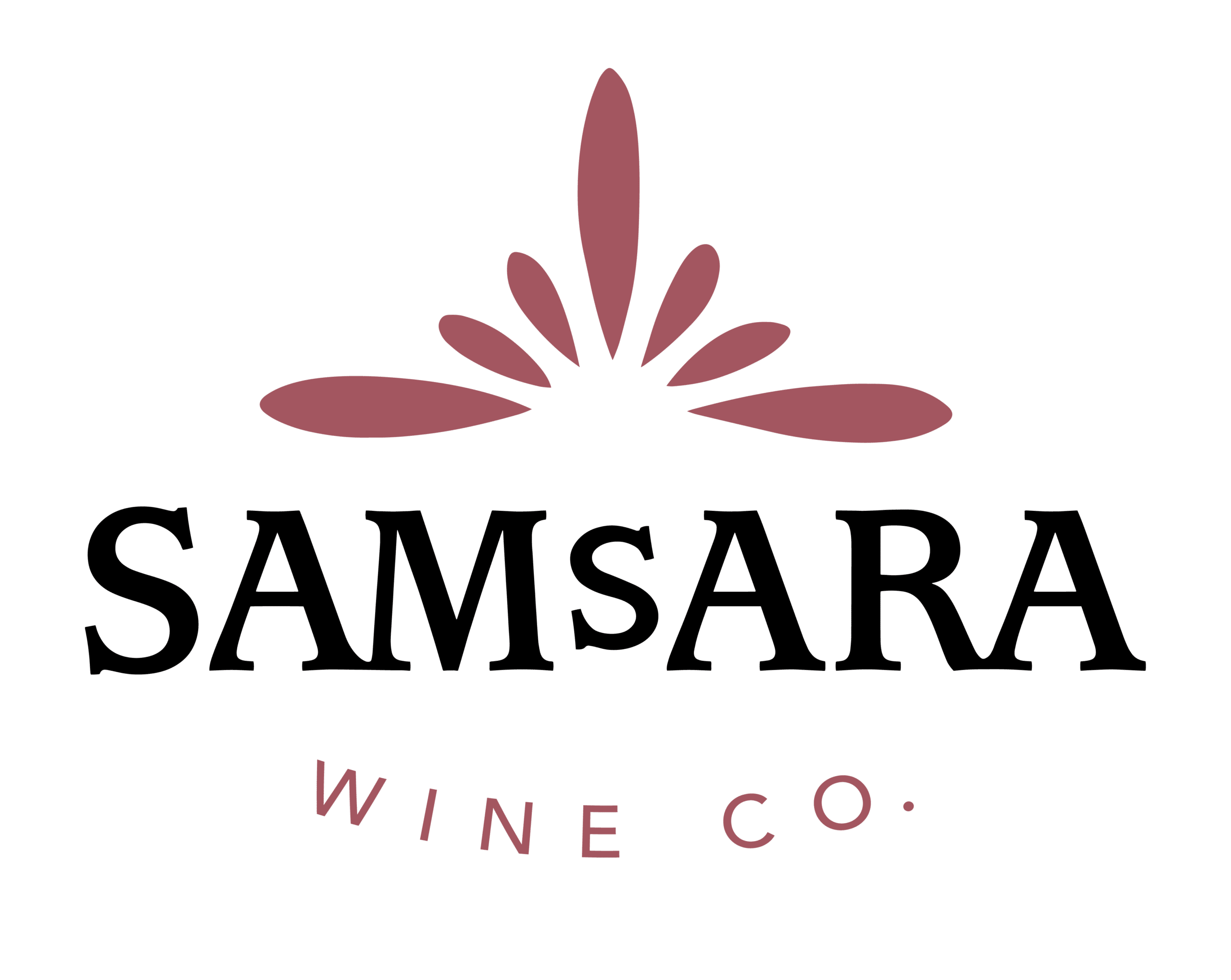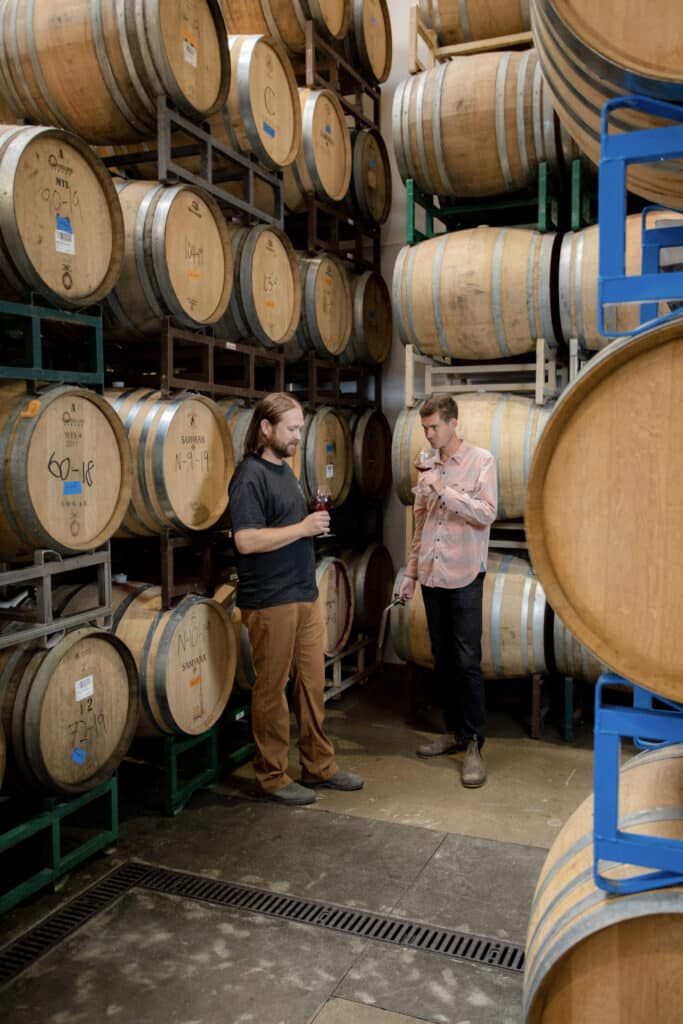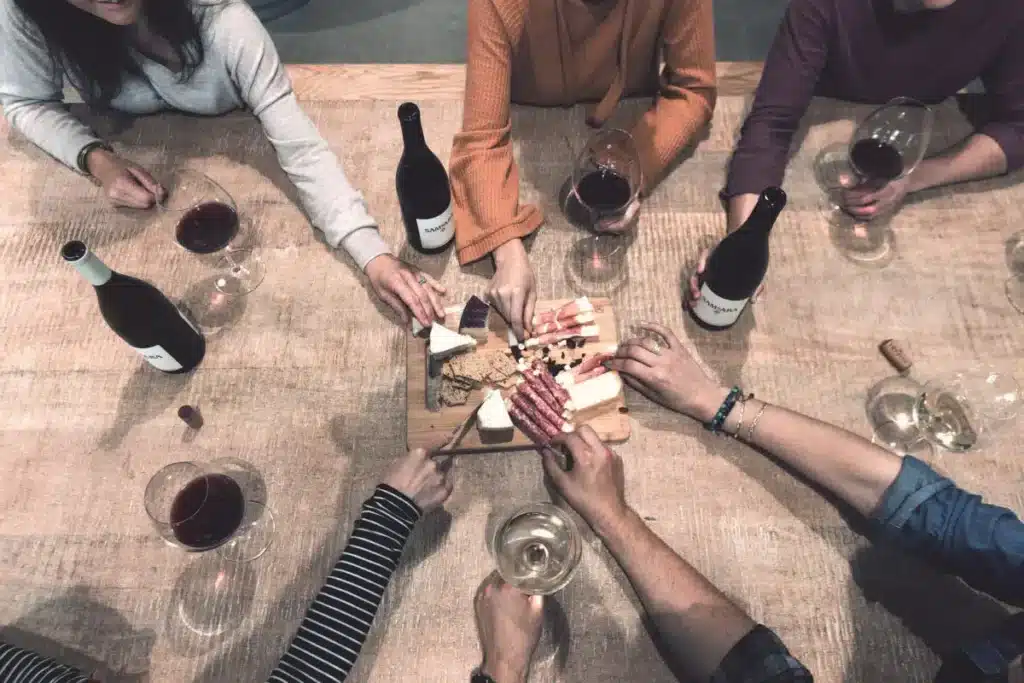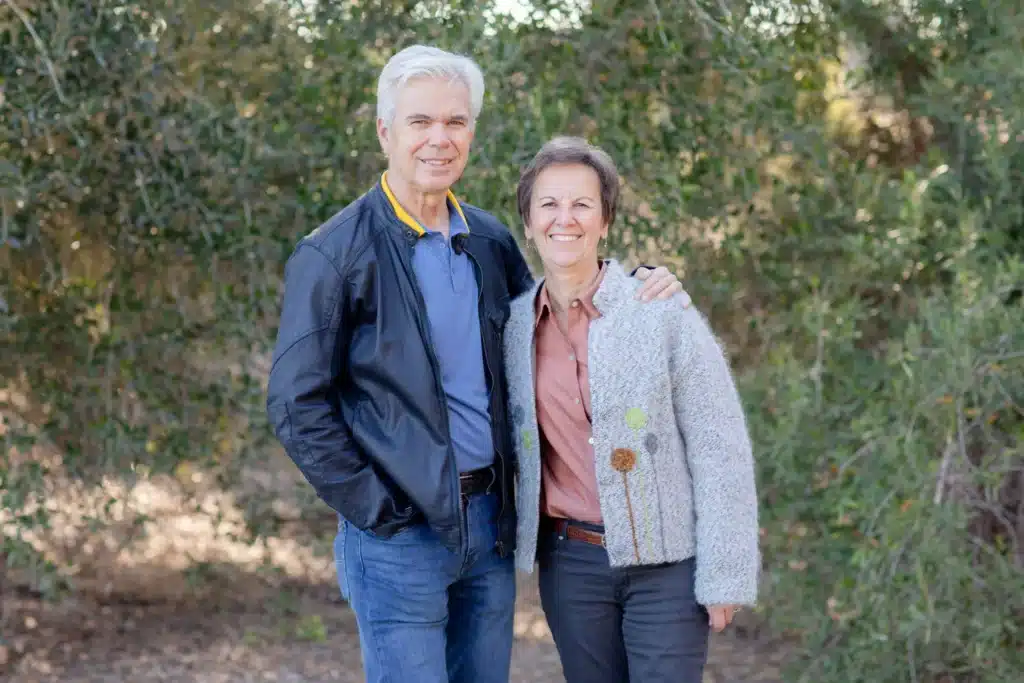No products in the cart.
Whole Cluster Fermentation: Why, What & How
Matt Brady, winemaker for SAMsARA Wine Company, discusses stem inclusion and whole cluster fermentation with Coastal Vineyard Care Associates.
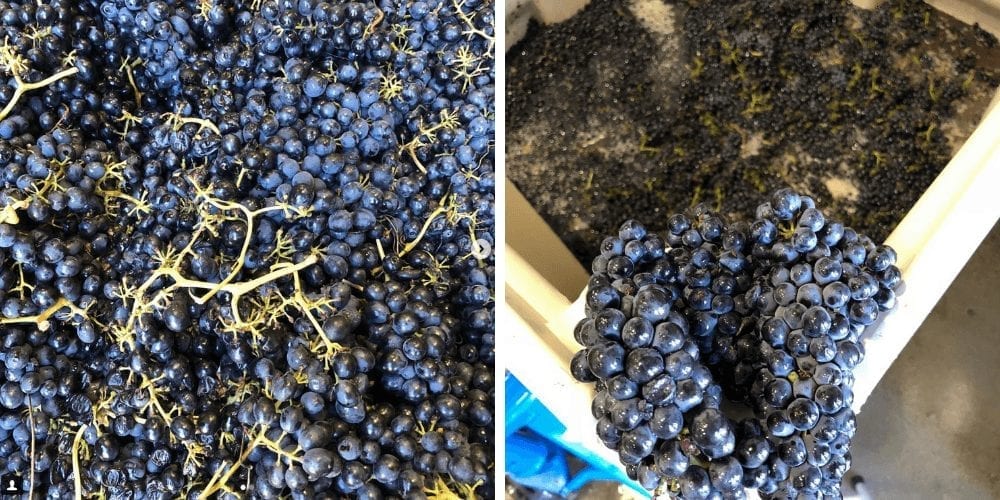
CVCA: So, why whole cluster fermentation?
MB:
To me, whole cluster adds a whole other element to the wine. It adds complexity, depth, texture, body, weight. Can I say complexity? Like, it definitely makes the wines more interesting. Kind of my short version of the spiel on whole cluster when I’m talking to folks – either in the cellar or in the tasting room or out showing the wines – this whole cluster brings three main things to the table.
You get added aromatics. It really enhances the aromatics, what’s already there. I used to think whole cluster just added spice aromatics, ’cause there’s a definite correlation with stem inclusion and aromatic spice, but now, I’m of the opinion – with all things in wine, your opinions and ideas kind of evolve. I think now that stems just really kind of accentuate whatever’s there already and enhance the aromatics that you begin with. So, I always get a lot of enhanced aromatics, spice aromatics – those really kind of interesting sort of chaparral and herbs de Provence and qualities that I really love in old world wines, I find that we can achieve here with stem inclusion.
So, aside from the aromatics, you get a textural impact from the stem inclusion. It really adds – stems really add almost like a laquery weight to the wine – like a mouth coating textural quality where the wine really just builds that mid-palate weight and gives you a little more body, a little extra richness – more of that kind of smooth, almost saline, velvety mouth-feel quality.
So, we have aromatics, we have mouth-feel, and then, you get the extra tannin from the stems as well.
It’s a little counter intuitive, ’cause you think the stems are gonna be hard or bitter or astringent, and, in my experience – they can be, I guess – but in my experience, they add some focus, some structure to the wine. There’s generally never any shortage of fruit in California wines, so it’s nice to have that extra structure and body to support it. And I’m always kind of blown away at just how counter intuitive it is that you add these extra stems. And you do have more tannin, but the result is kind of a richer, more textural, mouth-feel experience.
CVCA: What varietal is best for whole cluster?
MB:
I think it’s really well suited for Rhône varietals. I mean, in SAMsARA, we use whole cluster fermentation in all our red wine production. The Pinot Noirs generally have 50 to 75 percent stem inclusion. The Rhône wines are typically 100 percent, although there are some small deviations from that. But, I’m big on stems.
The SAMsARA wines kind of have been built around that style of my making, with the goal being to make powerful wines that are powerful in a non kind of overripe fruity way. So, the stems really help us achieve that. We build that big mid-palate that I was talking about. They allow us to get those spicy aromatics that we love and those savory flavors. So, Syrah, Grenache – absolutely.
Pinot Noir, for sure. You’d have a hard time convincing me that for any red wine production, it would be better or more complex without stems.
CVCA: What is your favorite varietal for whole cluster fermentation?
MB:
My favorite variety – I think, like I said, it makes everything better, but I’m really excited about whole cluster Syrah, and that’s something that I’ve been excited about for a number of years. But, with the SAMsARA lineup of Santa Rita Hills Syrah sites – these cool climate Syrah sites – they’re so well-suited for whole cluster winemaking. And that’s another kind of important point – is the vineyard site really dictates a lot of what you’re able to do with stem inclusion. Because we work with so many cool climate vineyards in Santa Rita and kind of throughout Santa Barbara, those vineyards seem to come in with higher acidity and lower pH, and you really need to start with that good low pH number and a lot of natural acidity, because the stems do raise the pH of the wine.
So, for the wines to finish in a balanced pH, you’ve really got to start with a lot of acid and a pretty low pH number.
CVCA: What about your favorite wine?
MB:
And then, my favorite wines that are made with whole cluster – I’m gonna go with Côte-Rôtie, Jamet. I got to do a trip to the Northern Rhône a couple of years ago with a group of winemakers, and the California winemakers presented their wines to the French guys, and Jamet’s comment to me was, “This is good, but why didn’t you use more stems?” And I was like, “You know, he’s got a good point. It would be better with more stems. Why didn’t we use more stems?”
And that’s probably what I’m most excited about with the degree of whole cluster fermentation that we use here at SAMsARA. ‘Cause I’m into it and I believe in it. I’m excited to kind of put my money where my mouth is and pursue that direction aggressively.
CVCA: Tell us more about what drew you to the whole cluster fermentation
MB:
Kind of like many things in the winery, a little trial and error. I think in 2005, I first experimented with whole cluster. The 2006 vintage rolled around, and the winemaking team thought that we didn’t like it. But, by the time 2007 came around, those 2005 wines that we had experimented with stem inclusion on, had really blossomed into these beautiful wines. And that’s another kind of important point here for whole cluster, is it takes a lot of time to integrate.
So, the wines can be kind of stemmy and aggressive and aggressively spicy and herbaceous and kind of dominated by that stem quality as young wines, and then, as they evolve in barrel and then even in bottle, those qualities really seem to integrate. And you don’t get any of the kind of negative green quality as associated with stems, but you get all those nice things that we were talking about earlier.
CVCA: Tell us about the wine in your hand.
MB:
So, this is Larner Vineyard Grenache – Larner Vineyard in Ballard Canyon. I remember it was a very cold morning, the morning these grapes were picked, kind of late in the season, but we did this 100 percent whole cluster. So, the fruit was lightly foot stomped just to get it juicy, and we do all native fermentation. So, this one actually did take quite a few days to start, because the fruit came in so cold, but it fermented for about three weeks – a slow fermentation – and I’m really pleased with the Grenache from 2017. I think it’s a pretty nice vintage all in all, but the Grenache, we really sort of hit it on the bullseye.
And Larner Vineyard Grenache is some special stuff. Very well farmed. But I love this kind of – like, the bramble-y, spicy quality of this wine. It’s a little deceiving, ’cause it’s got sort of a mid-weight color. It’s kind of that garnet – almost a little lighter.
I don’t want to use that word, but this wine’s anything but light on the palate. You really get a lot of intensity and power and focus. I think a lot of that’s from the stems. There’s some guts to this wine. A lot of stuffing.
CVCA: Do you look for certain qualities in the vineyard for whole cluster fermentation?
MB:
So, we do look for certain things in the vineyard when we determine how much whole cluster we’re gonna do or if we’re gonna do it? I wish I had a better answer, ’cause the short version is “No”. And I think whole cluster is one of those things that of which there are a lot of in the wine-making world where it’s hard to wrap your head around it completely. I’ve made some really beautiful wines with 100 percent whole cluster with neon green bright stems, and the stems tasted green and the wine might have been a little green and a little herbaceous as a young wine, but all that kind of integrated over time. That particular wine that I have in mind – an ’07 Mourvedre– it’s still one of my favorite wines that I’ve made.
You know, for me, I think it’s some of the other qualities or the other factors that are more important in determining whole cluster – like, how the vineyard is farmed, what kind of pH and acidity the fruit’s gonna come in with. The way we farm most of our vineyards with coastal is there’s a lot of exposure in the fruit zone, so the stems generally do lignify and get a little bit of color. Would I be scared of a green stem? No. I would still – you know, I might hedge my bets a little and do some of it whole cluster and then some it some combination of de-stemmed and whole cluster fruit, but that’s something I tend to do anyway, just to come up with more pieces to work with, which helps facilitate blending and kind of building those layers of flavor, like we talked about.
But, yeah, I really don’t look at stem maturity as a determining factor for how much whole cluster to use. It’s more of my knowledge of the vineyard, if the fruit has powerful flavors, if I think the flavor spectrum of what whole cluster brings to the table is gonna be a positive contribution to what’s already going on in that vineyard.
Video by: Coastal Vineyard Care Associates
